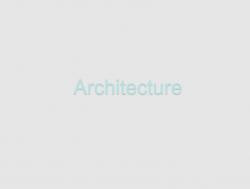Bowen Zengyang's collections
On the Pillars
<p>Personal Information</p><p>My major is computer science at UMass Lowell. My collection will focus on the representative statues and buildings of the Roman Empire. Architecture reflects the strength of a country, and statues reflect the cultural tendencies of a country. From these two perspectives, I can get a better understanding of the Roman Empire at that time.<br /></p>
<p>The Romans conquered the world in the middle of the third century B.C. and gained the sovereignty over the countries bordering the Mediterranean Sea.The Roman Empire is militarily successful, but compared with the remarkable achievements in politics and literature, its achievements in visual art seem to lack an independent and complete feature.The main reason is that the Romans highly admire and carefully imitate Greek art. They not only import a large number of works from Greece, but also imitate them. Even in their own works, the sign of Greek art can still be seen clearly.
</p>
<p>On the other hand, because the Romans greatly emphasize the practicality of art rather than creativity, Roman art, whether in architecture, sculpture, or painting, is often copied from Greek works or takes what is good and puts it to its own use. The only ones that can be said to have Roman style are the portraits of people after the late republican period. Different from the aestheticism and elegance of Greek portraits, these Roman portraits resemble real people and are mainly used for memorial purposes. Although they have no profound aesthetic expression, they have left a vivid look of contemporary Roman celebrities.
</p>
<p>In the early Rome, the country was founded on agriculture, so the whole society advocated such virtues as diligence, endurance, frugality, etc. However, it constantly invaded the outside world in the republican era,so the discipline of the army derived the requirement for obedience and law-abiding. Among which, the emphasis on the law and the achievements of the rule of law had a great contribution to the civilization of later generations.
</p>
<p>Such a character is a practical spirit shown in life, thought, and art.Therefore, among the works of art left over from the Roman period, it is its public works that are best known, such as the roads, water supply pipes, public bathhouses, coliseums and so on.These huge and magnificent buildings were all built for practical purposes, and have all kinds of ingenious architectural techniques. Even in today, their ruins still make people amazing.
</p>
 Bowen Zengyang
Bowen Zengyang
14
Regress
<p>With the collapse of the Roman Empire, Europe fell into the Middle Ages. During this period, strict dogmas restricted medieval literature, art, science, and technology. In the late Middle Ages, the germination of capitalism emerged first in Italy in Europe under various conditions. The commodity economy operates through the market. The choice of purchase, bargaining, and contract-making in the market are all voluntary actions after consideration. This is the embodiment of freedom. Of course, if we want to have these freedoms, we must have the freedom of ownership of means of production, and the common premise of all these freedoms is human beings. Freedom. At this time, Italy calls for human freedom, and stale Europe needs a new ideological movement to promote human freedom. The emergence of the bud of capitalism has also provided the possibility for the rise of this ideological movement. The prosperity of the urban economy makes the wealthy businessmen, workshop owners and bankers who have great success and wealth believe more in their personal values and strength, and are more full of the spirit of innovation, enterprising, risk-taking and winning. </p>
 Bowen Zengyang
Bowen Zengyang
8



